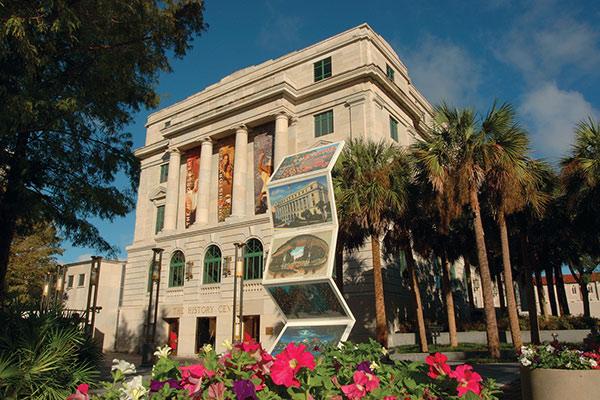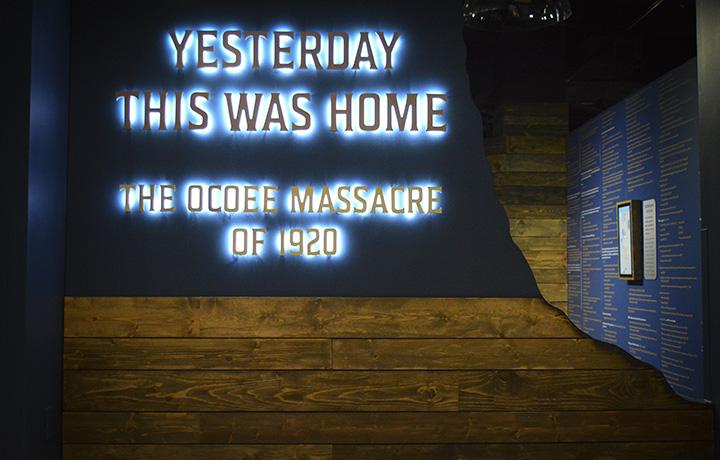
Building an Exhibition at the Orange County Regional History Center
From ideation to finished product, creating an exhibition takes a village at the Orange County Regional History Center. The Orlando museum is home to award-winning exhibitions visited by guests worldwide. Its national acclaim springs from the staff’s thorough attention to detail in creating an educational and immersive experience. The History Center doesn’t work alone; the museum heavily involves its community to portray and honor history accurately.
Exhibitions begin with a story, and the History Center selects its themes in different ways—commemorating an anniversary, responding to a significant event, or visiting the past through a different lens. The museum’s most recent exhibition, Figurehead: Music & Mayhem in Orlando’s Underground, was inspired by an oral history that led the interviewee to generously donate his personal collection of music memorabilia to the museum. Members or groups in the community bring forth other exhibitions such as Yesterday, This Was Home: The Ocoee Massacre of 1920 and Leaving Vietnam: Building a New Life in Central Florida.
Protecting and Preserving History
Protecting and preserving Central Florida’s history is vital, so the History Center works closely with various diverse experts to bring stories to life. Community members, historians, curators, educators, and designers collaborate behind the scenes to thoroughly research the topic, gather pieces for the collection, and create an experience that will transport guests back in time while honoring those who lived it.
After the theme is clear, the History Center spends a great deal of time compiling resources, researching the topic, and reviewing potential artifacts, archives, and photographs for inclusion. All of this must occur before any real planning for the design and layout of an exhibition can begin. The final product includes many considerations, including typography and treatment of labels, color palette, placement of objects, and accessibility considerations. All these factors help convey the interpretive goals of the exhibition, evoke specific emotions, and help ensure education and enjoyment for all.
Finding the Perfect Style
Often, the first thing guests notice when entering an exhibition is the text on the walls. The History Center considers many typeface styles and size variations to find the ones that best emphasize its message. For Yesterday, This Was Home: The Ocoee Massacre of 1920, designers reviewed more than 70 font choices before making a decision. Color played an equally significant role, with curators selecting deep purples and blues to reflect the meaningful but dark legacy of the Ocoee massacre.
In creating an exhibition, designers also strive for best practices for accessibility and layout. They examine every aspect of making the exhibition as accessible as possible to all by considering font sizes, offering bilingual interpretation, and ensuring contrast between wall and text color. The exhibition’s layout plays an especially crucial role in understanding the story. When designing the layout, History Center staff decide what order the text should be read in, where guests will naturally gravitate, and how to create intimate spaces in areas intended for reflection.
The History Center takes its role as a trusted resource for the community seriously, which is why its staff members go through such an extensive process to create profound, accurate, and inclusive exhibitions. The hope is that after guests step into an exhibition at the History Center, they will walk away with a better understanding of Central Florida’s history and a new perspective on the community.



Comments